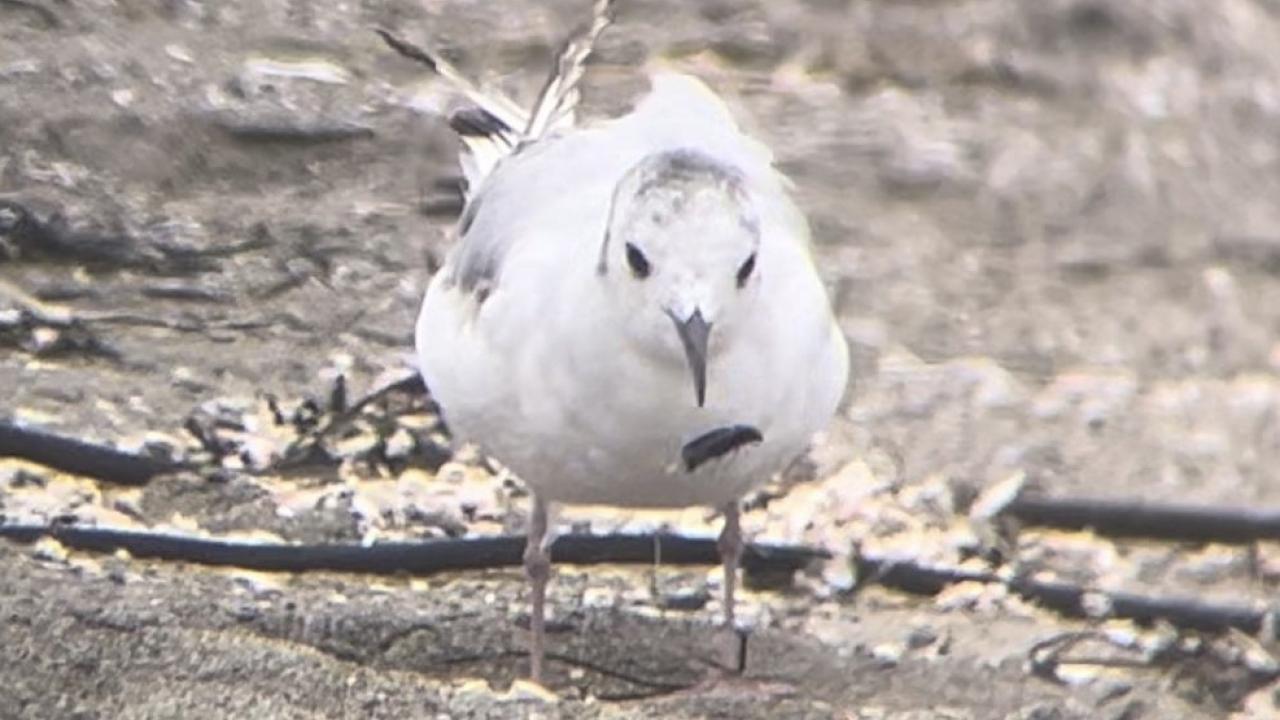
Learning How Birds Have Foraged Their Way Into Talitrid Amphipod Ecology
An SRJC-BML Internship Story
I am Arden Hiatt. I just finished my second year at SRJC and am transferring into UCSC this fall, 2024. I am primarily interested in marine ecology and ornithology. I spent this summer helping my mentor, PhD student Claire Murphy, with her research on beach community ecology. Bonaparte’s gull at Salmon Creek Beach, feeding on the beetles which prey on amphipods.

Like many SRJC interns before me, I was hoping to gain some of that true in-the-field experience when signing up for this internship. My time at BML granted me just that and more. During these past couple of months, I’ve learned about conducting field and lab work, what grad school might look like, and how supportive and optimistic a scientific community can be. Under the guidance of my mentor, Claire Murphy, I performed a mini-experiment to contribute to her work with the ecology and behavior of the talitrid amphipods living on our beaches. This summer, we focused on four species of amphipods: Megalorchestia californiana, M. columbiana, M. benedicti, and M. corniculata. We were interested in how competition and predator-prey interactions may change across different beaches, and how this may in turn influence the amphipod communities. While looking through past undergraduate student reports in the BML library, I was inspired to use my ornithology skills to understand how bird foraging behaviors may change across different beaches we were studying, as this may have impacts on either the amphipods themselves, or their invertebrate predators (like beetles and spiders). We settled on the method of setting up 30 meter transects to observe bird activity for 20 minutes at various beaches. With the help of my binoculars, I performed these bird surveys at five local locations, each varying in wrack content: Doran Beach, Salmon Creek Beach, Kehoe Beach, and Goat Rock Beach. On a camping trip in Humboldt County, I was excited to conduct my surveys on Launcher Beach, as well. The most exciting observation to come from this method was a Bonaparte’s gull at Salmon Creek beach successfully foraging for beetles and other arthropods which prey on talitrid amphipods. Because this observation demonstrated a clear link between birds and amphipods, it was hard not to jump for joy and scare the bird away in the moment. I was not expecting to obtain such ideal footage on my first day of data collection. This, alongside observable ecological differences between beaches, validates a link between shorebirds and the amphipods my mentor studies.
Capturing the moment that the Bonaparte’s gull consumed a beetle was a major highlight; however, it was one of many. During my time at BML, I spent quite a bit of time bouncing around between different projects and assisting other mentors. This included helping my mentor with tethering amphipods in the eelgrass and with beach work, as well as assisting other Stachowicz lab members, Serina Moheed and Emma Deen, with their eelgrass studies. This variability in my time spent at BML also connected me to more people in the lab, which made team activities and events all the more fun and networking more productive. It is difficult to comprehend the complexity of my time spent at this marine lab and how much more prepared I now feel moving forward in my education. I am beyond grateful for this experience and the people who led me through it.
About the Program:
The SRJC-BML Internship Program provides summer research opportunities for Santa Rosa Junior College students at the Bodega Marine Laboratory.
